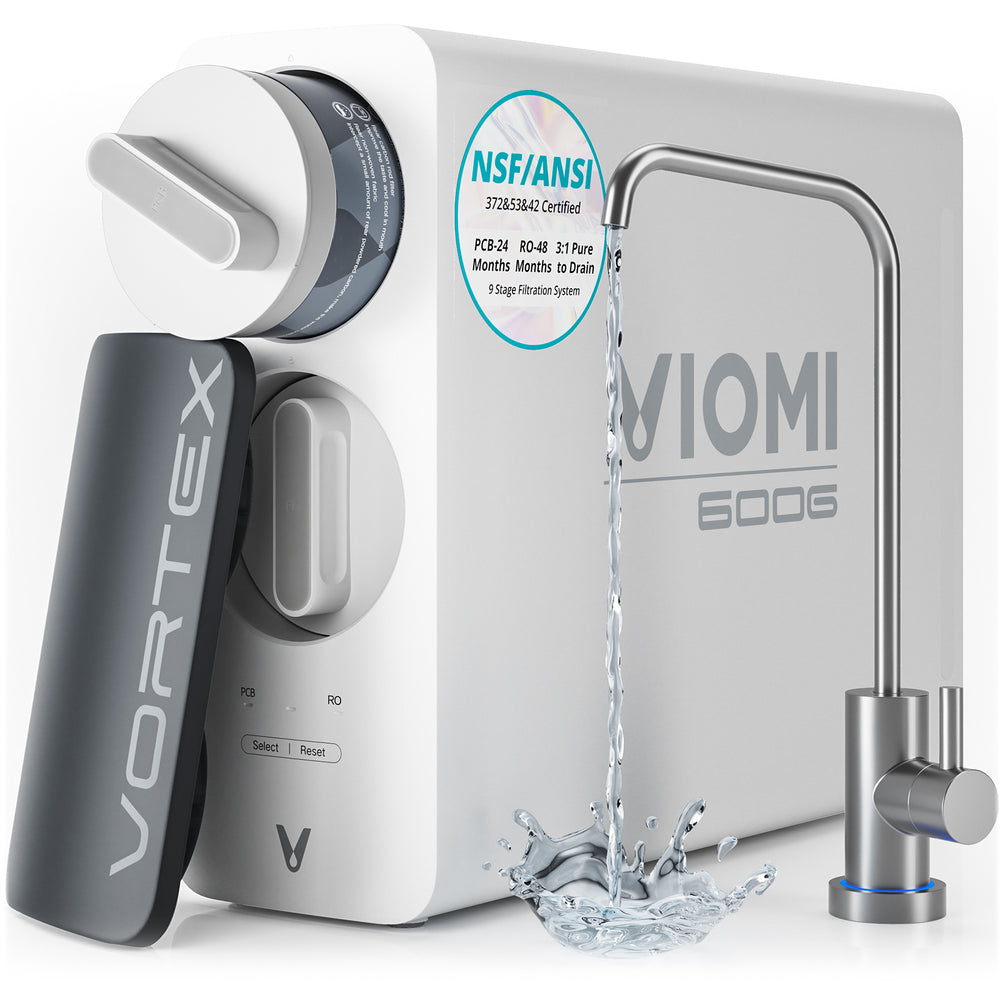Unlock Crystal Clear Water: Discover the Secrets of Under-Sink Filters
Unlock Crystal Clear Water: Discover the Secrets of Under-Sink Filters!
Clean drinking water is essential for our health and well-being, yet many of us are unaware of the various contaminants that can infiltrate our water supply. From pesticides and heavy metals to bacteria and chlorine, the sources of water contamination are alarmingly common, often stemming from aging infrastructure or local industrial activity. This is where under-sink water filters come into play, offering a practical and efficient solution for households looking to ensure access to safe and clear water. By installing an under-sink filter, homeowners can enjoy improved taste and quality, transforming their tap water into a source of hydration that is not just safe, but also refreshing.
Understanding Under-Sink Water Filters
Under-sink water filters are compact filtration systems installed beneath your kitchen sink, providing a dedicated source of purified water. Unlike pitcher filters or faucet-mounted systems, under-sink filters offer a more permanent and efficient solution by directly connecting to your water supply. They typically consist of a series of filter cartridges housed in a sleek unit, allowing for easy access and replacement. Common installation locations include the kitchen, but they can also be fitted in utility sinks or bathrooms, depending on your needs. This system not only saves counter space but also delivers filtered water on demand, making it an ideal choice for families and individuals who prioritize clean water.
Benefits of Under-Sink Water Filters
The benefits of using under-sink water filters are significant and multifaceted. Firstly, these systems drastically improve the taste and odor of tap water, removing unpleasant flavors caused by chlorine and other contaminants. Moreover, they effectively reduce harmful substances, such as lead, mercury, and volatile organic compounds (VOCs), which can pose serious health risks. In addition to health advantages, using an under-sink filter can be more cost-effective than purchasing bottled water. One friend of mine, who switched to an under-sink filter, shared that their family’s annual savings on bottled water was substantial. Beyond financial savings, these filters contribute to environmental sustainability by reducing plastic waste. Overall, under-sink filters provide a holistic approach to better drinking water.
How Under-Sink Water Filters Work
Understanding the mechanics behind under-sink water filters can help you appreciate their effectiveness. These systems typically employ a multi-stage filtration process. The first stage often consists of a sediment filter that captures larger particles, such as dirt and rust. Following this, carbon filters play a crucial role in removing chlorine, bad tastes, and odors. Some advanced systems may even include reverse osmosis (RO) technology, which pushes water through a semi-permeable membrane, effectively eliminating up to 99% of contaminants, including dissolved solids. Each stage is designed to enhance the purity of the water, ensuring that what comes out of your tap is not only clean but also tastes great. This intricate process is what makes under-sink filters a standout option for families concerned about water quality.
Installation Process
Installing an under-sink water filter is a manageable DIY project for many homeowners, provided you have the right tools and follow the correct steps. To begin, gather your tools, including a wrench, screwdriver, and possibly a drill. Safety should always come first, so be sure to turn off the water supply before starting. Begin by removing the existing faucet or plumbing connections as needed. Next, install the filter unit according to the manufacturer's directions, typically attaching it to the cold water line. After connecting the necessary tubing, check for leaks before turning the water back on. While many people successfully install these systems themselves, it may be beneficial to consult a professional if you encounter any challenges or if you’re unsure about the plumbing involved.
Maintenance and Care
To ensure optimal performance and longevity of your under-sink filter, regular maintenance is key. Most systems require filter replacements every six months to two years, depending on usage and water quality. It’s essential to follow the manufacturer’s guidelines for replacement schedules. Additionally, periodic cleaning of the system can help maintain its efficiency. Keep an eye out for any changes in water taste or flow rate, as these can indicate that it’s time to replace a filter. By keeping up with maintenance, you can enjoy the benefits of pure water without interruption, ensuring your household remains healthy and hydrated.
Ensure Clean and Safe Drinking Water
In summary, under-sink water filters are an effective solution for ensuring clean and safe drinking water at home. They offer numerous benefits, including enhanced taste, removal of harmful contaminants, and cost savings compared to bottled water. By understanding how these filters work and committing to regular maintenance, you can enjoy consistent access to high-quality water. If you haven’t already considered installing an under-sink filter, now is the perfect time to explore your options and invest in better water quality for you and your family. After all, nothing is more essential than hydration that is both safe and delicious!